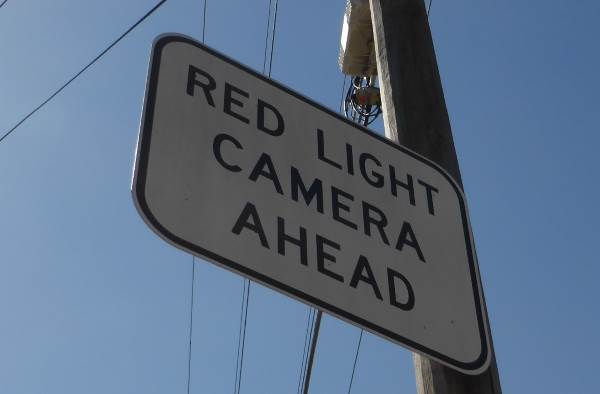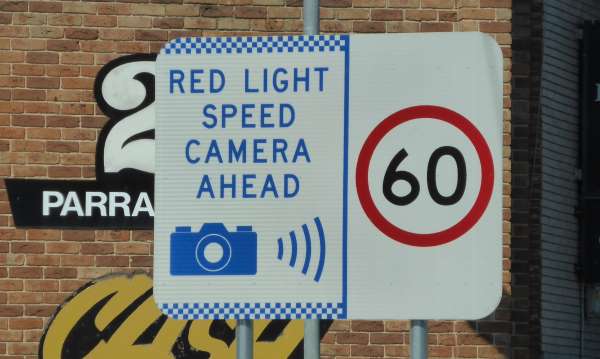A. Red light cameras take photographs of vehicles that cross intersections when the lights are yellow.
A. Red light cameras take photographs of vehicles that cross intersections when the lights are yellow.
B. Red light cameras take photographs of vehicles that speed through intersections.
C. Red light cameras take photographs of vehicles that enter intersections when the lights are red.
A red light camera is a camera on a pole mounted a few metres back from an intersection that takes a photo of vehicles that enter an intersection after the traffic light has turned red. For the camera to not be triggered, the vehicle must stop behind the white stop line, or already be fully in the intersection when the light turns red. The photo is taken of the back of the vehicle.
Red light cameras work by detecting when a car crosses the line while the light is red. You will sometimes see them flash if emergency services vehicles pass through a red light.
Some cameras can only detect red light runners and they will be signposted like this:

Whereas others can detect red light runners and speeding. They are usually signposted like this:

The speed cameras can detect speeding regardless of whether the lights are red, yellow or green.
The red light cameras are there to discourage people from running the red light, and thus risking a collision. They are installed at high-risk intersections (usually those that have experienced five serious crashes in five years caused by red light runners). They operate 24 hours a day, seven days a week.
The photograph vehicles that go through a red light, then a penalty notice is sent to the owner of the vehicle. The owner can then either:
The camera only takes a photo if you cross the stop line more than 0.3 seconds after the light has gone red. This means that if you have already entered the intersection on a yellow light, it won't trigger the camera. Heavy vehicle drivers must be aware that their trailers could trigger the camera.
Two photos are taken. The second one is taken approximately one second after the first one and proves whether a vehicle continued through the intersection or just happened to not quite stop before triggering the camera. Police at the Traffic Camera Office determine whether an offence was committed.
The date, time, lane position and amount of time the light was red for are imprinted on the photo. If the camera monitors speed, too, your speed and the local speed limit will also be provided.
It's a $415 fine if you are caught on the camera.
Running a red light puts other vehicles and pedestrians at risk.
All speed cameras and red light cameras are tested and calibrated every year to maintain accuracy.